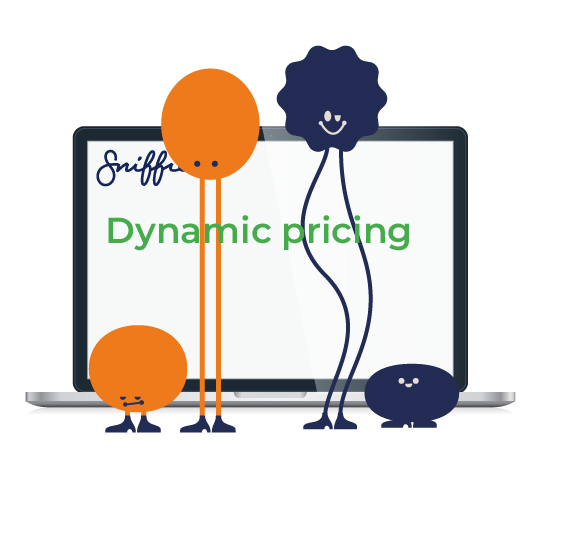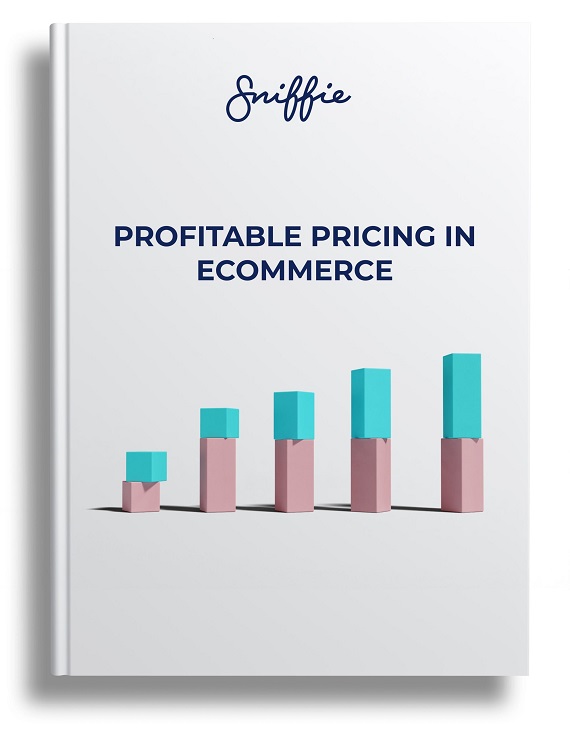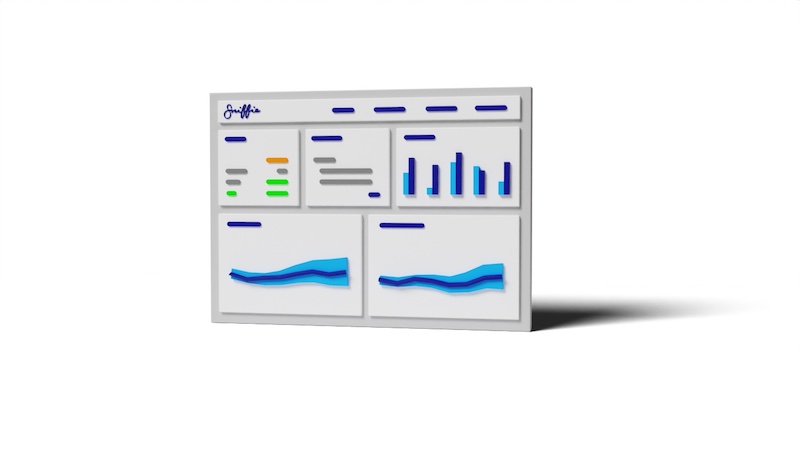ECommerce is a highly competitive business area. Therefore, a key aspect is to understand your competitive environment. Consequently, we wrote you a 15-step guide to get started and understand your competition better.
1. Check the market competition situation
Let’s face it. To understand your competitor’s pricing, you need real-life pricing data (or price monitoring data, as often called). It gives you a true insight when you collect competitor pricing manually or use web scraping techniques. The most profitable way is to do it for some time to understand how much your competitors change pricing. Maybe even have it on permanently.
Once you have the pricing data, match the similar products against your own to compare pricing. Again, if you have periodical data from your price changes, it will help you to figure out how much your competitors follow your pricing.
So, check the market competition situation first by collecting competitor pricing information.
2. Monitor the toughest competition daily
Most likely, 20 percent of your products bring 80 percent of your revenue. We call those products Key Value Items. From a profitability perspective, you must monitor your Key Value Items against your competitors because price changes in these products will immediately impact your profits.
It is crucial to be alerted if market pricing is going up or down and requires you to make pricing changes. There are a lot of good web scraping and price monitoring services that you can use for daily monitoring.
3. Understand which price changes you should not react to for competitor pricing
If you use dynamic pricing, make sure you also cover competitor campaigning. Changing pricing based on price means you are also reacting to their pricing campaigns. Set your automation so that it does not respond to competitor campaigns.
The easy way is to monitor the competitor campaigns for not reacting to price changes unnecessarily.
4. Find opportunities for price increases
When your competitor is out of stock, the demand will shift to other vendors. So collect the availability data to know when your competitors are low or out of stock. That helps you to make better pricing if needed. Then make price changes based on that. Monitoring the competitor availability is the wisest action to ensure you do not unnecessarily react to their price changes.
5. Utilise the competitor availability and campaign in your digital marketing to create opportunities
When you know your competitor has a campaign or is out of stock, you should know how to react. First, create clear guidelines on how to act in such situations. For example, create ad groups to Google Ads highlighting that you have stock and can deliver immediately. Then, automate those guidelines in your process or educate your team on how to make price and ad change manually.
Utilizing competitor availability and campaign in your digital marketing will create opportunities that improve your profitability on a larger scale.
6. Find the price leaders in the industry
When you have collected the price monitoring data, check which of your competitor is the price leader and set the price level in your industry. That will help you to understand how much room you have to price your products. Trying to match their pricing manically might not be wise.
The most straightforward way is to use your internal sales data to map first the price elasticity of your demand and then see how much those competitors affect your pricing. You can download a free tool for calculating price elasticity from our resource library.
Use Our Free Price Elasticity Calculator
Use this simple calculator to calculate your product’s price elasticity and understand how price changes affect your product’s demand.

7. Find the first movers in the industry
With the same price monitoring data, check which of your competitors make the first price changes. That helps you to understand who are the ones that ignite pricing processes. Essential if they are aggressive in pricing. Understanding how the price changes start will help you set strategies to react to their pricing. Create guidelines that ensure you won’t match their prices, especially with pricing that is too low or unprofitable.
8. Find competitors who are following your pricing
Check which of your competitors always follow your pricing. That helps you to understand who are the ones that move after you and how fast they do it. You can also look for specific products they follow. This approach creates a competitive advantage when you will not just lower pricing because of your competitor’s automation. Otherwise, you might find yourself in a dropping market.
9. Use a pricing calendar to understand your competitor’s pricing
A pricing calendar is an effective tool for understanding how your competitors price their products. When they do and how much. That will help you see what pricing changes are ignited by them and by you. Use your pricing data to create a simple calendar where your and your competitor’s price changes are. Find schedules, patterns, and strategies they hide in their pricing changes.
Creating a pricing calendar to understand how competitors react to your pricing will be one of the most important insights you can give your team.
Learn how to use Dynamic Pricing
Dynamic pricing is a hot topic when it comes to pricing but it’s often used as a buzzword in strategic plans rather than being implemented into the pricing strategy of a company. In this webinar recording, two pricing experts take a hard look at how time really should be taken into consideration when pricing and how to use this to improve your revenue.

10. Make sure to mark the competitors that use the price match policy
Price matching is a standard policy used by eCommerce companies, as well as retail companies. In many cases, it is a policy that might even lower the competition, as Harward Business Review explains in this article. You should know which competitors do that and how it affects your business.
So, go to your competitor’s websites and check their terms. Mark those competitors that use a price match policy. If you suspect that they match your lowered pricing, that might be a reason to modify or keep track of your pricing policies.
11. Understand your competitor’s product category diamond
You might use quality classes when you sell products that satisfy the same need. Quality classes help you to price products always in the same relation. For example, let’s say you have three similar televisions in the same group. One costs 99€, the second 259€, the third 399€. If you change their pricing individually, it might easily add product cannibalization. When you always move those in the same amount, let us say 10%, the value added between the models remains the same.
As explained above, it is also helpful to understand how your competitors have structured their quality classes or category diamonds if you use quality classes. Firstly, understanding how they create pricing increments will also help you to develop appropriate price increments for your products. Secondly, it helps you to keep relevant spaces between different product prices or, thirdly, even structure new ones.
12. Using a competitor price index to establish overall goals
The competitor price index is an essential Key Performance indicator. Use products you and your competitor have in common. First, calculate a sum of all product prices you two have in common. Your index value is always 100, and competitors are monitored against that. For example, if the competitor is 99, they are one percent cheaper on the index.
You can create the CPI index to compare every competitor’s sum to your basket sum (only the exact products included). Then, divide their basket (same products that you and they have) with your basket sum and convert this to an index.
An index value that is less than 100 means that the competing basket is cheaper than your basket. Values above 100 mean the competing basket is more expensive than your basket.
The Competitor Price Index will help you establish company, category, and brand pricing guidelines. Then, you can monitor your overall pricing performance instead of focusing on individual products. Some products might be cheaper or more expensive than your competitor’s, but you see your general price level as a critical index.
As simple as it is, a competitor price index will give you an overall KPI for your pricing on a competitor, category, and brand level.
Profitable Pricing in eCommerce Ebook
Setting prices is simple, but knowing the right price point requires a bit of knowledge. This book and the tool to go with it will give you all the information and secrets you need to know.
This is what you will get:
- Handbook of profitable pricing in eCommerce
- Strategic Pricing Gateway -calculator
- Concrete tips and instructions for profitable pricing

13. Check the product match level against competitors
Knowing how many vendors sell the same products as you do is essential. Match, at least, your Key Value Items to your main competitors. This way, you know your pricing competition against the competition. The less competition, the more you have pricing leverage on those products.
14. Check how your ABC listing fits against the competition
Knowing how many vendors sell the same products is essential—knowing how similar products match your inventory ABC-listing can help you create alternative pricing options.
For example, if you have many A-list products matched but not B- and C-list, you might want to use dynamic pricing in A list (to keep your volumes up) and price and profit optimization in B and C (find the most profitable price point based on your demand).
15. Check how much your competitors sell private label products
As the last tip, private label products are perfect for diverse price image. Gather details on how much your competitors use private labels to understand how much your branded products might be affected by, for example, lower price point competition. Using such products as Substitute matches for price monitoring is wise. But most importantly, your private label products should yield better profitability as there is less competition.
Interested to develop your pricing more?
Use our free tools to improve your pricing already today. Download from a variety of free professional tools to get started.



